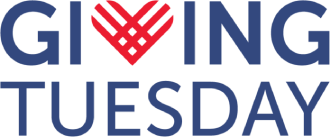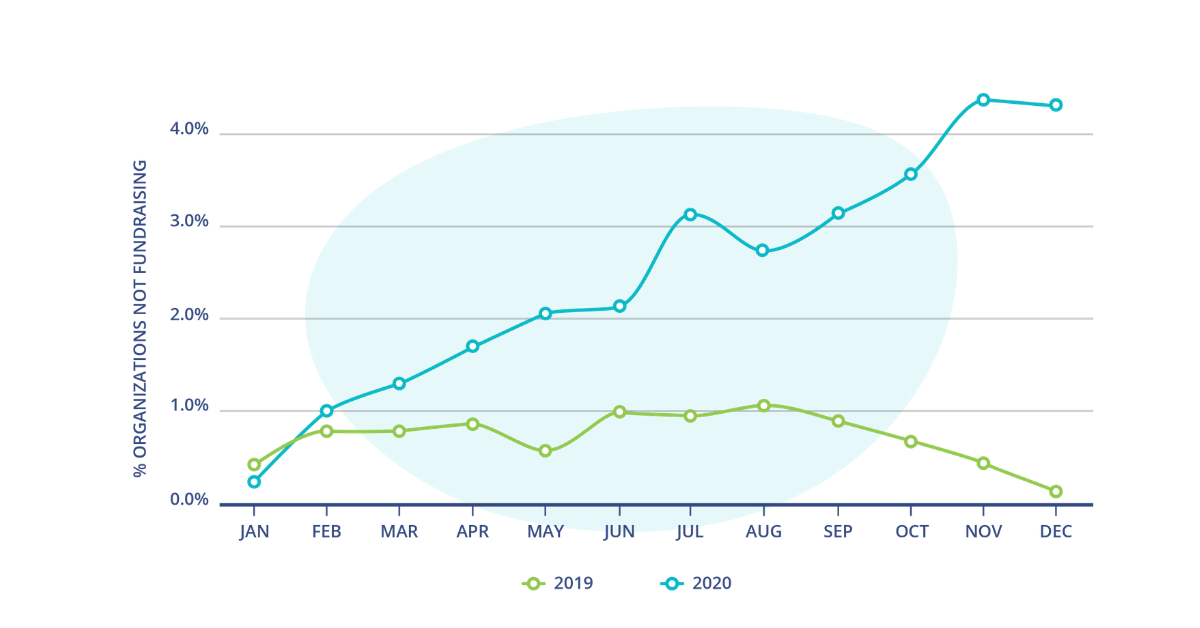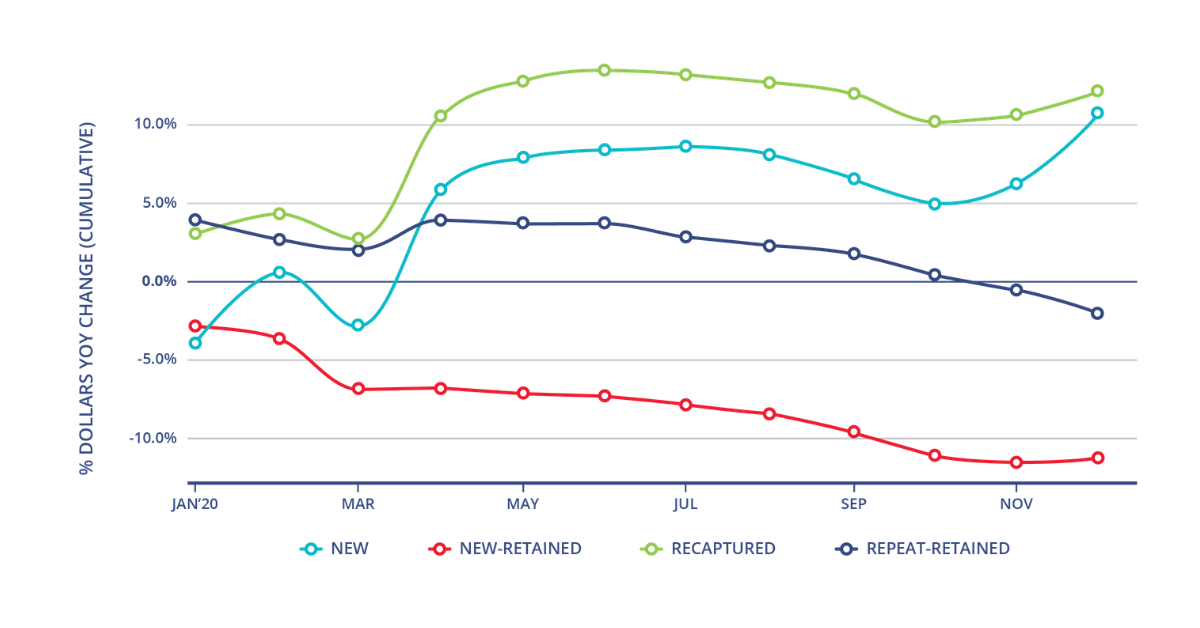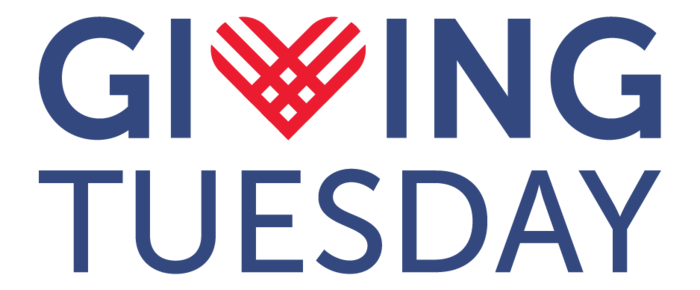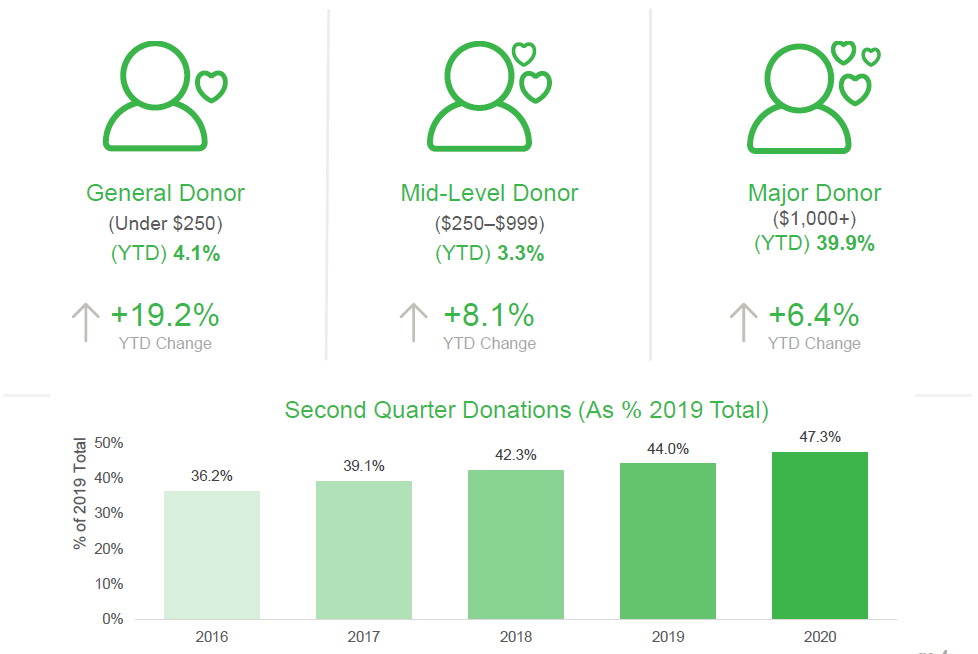In 2020 people of all backgrounds and beliefs stepped up to help each other in response to an unprecedented crisis with a renewed spirit of community, solidarity, and generosity. Last year’s volatility also resulted in a highly anomalous year in charitable giving. We had the opportunity to dive deep into the data to learn from this experience. Our latest report, Giving in Unprecedented Times, helps us better understand the fluctuations in, and drivers of, charitable giving during a year of crisis to pinpoint risks and opportunities for organizations moving forward.
When we took a closer look at U.S. charitable giving data for all of 2020, we uncovered unique shifts in giving by cause area, time of year, and donation size and frequency that help tell the story of a tumultuous year.
We also recognized that because of the way the unusual events of 2020 affected how nonprofit organizations responded as well as the ways donors gave, we needed new methodology to account for extreme variance from norm. The analysis gives a representation of the sector as a whole and “typical” organizations, providing visibility to the volatility in 2020 that underlies the average results for the sector. This approach also allows us to contextualize results by both organization size and cause, and these changes will make ongoing reporting more resilient to market volatility in the future.
➨ It’s important to note that this lookback focuses on one facet of generosity: monetary giving to primarily U.S. 501c3 nonprofit organizations. We know that the events of 2020 sparked a wave of generosity in all forms—gifts of time, voice, goods, and skills as well as acts of kindness around the world. Where systems were overwhelmed or unable to meet the demand, neighbors, families, friends and strangers stepped in to weave together their own safety nets through giving circles, mutual aid networks, community fridges, and other acts rooted in reciprocity and mutuality that exist beyond a formalized social sector. The GivingTuesday Data Commons is working on a number of other research initiatives to uncover important insights into the many ways that people gave in 2020 beyond donations to registered charities.
So, what did we learn about giving in 2020? Our analysis helped uncover trends in donor acquisition, retention, gift size, and more–there’s more to discover in the full report, but here are a few key trends that help us understand last year’s giving and offer insight on how the social sector can plan for recovery and resilience in 2021 and beyond.
Giving Was Up Overall, But Not for All Nonprofits
2020 was unique in that it bucked the multi-year trend of fewer donors giving, instead we saw an overall increase in both donors and dollars. Giving in 2020 increased by an estimated 5.2% year-over-year when compared to 2019.
While total charitable giving was up, some cause areas, organizations and donor categories saw significant gains while others suffered reductions. In 2020, more than any other year, the average results for the sector, however estimated, fail to tell the true story of a typical nonprofit. The median nonprofit experienced lower results during 2020.
For the first time, we saw appreciable numbers of organizations failing to fundraise each month. While this number is typically around 1% in prior years—dropping to negligible levels in December—this number rose steadily throughout the year and hit 4% in Q4. This failure to fundraise is an important factor in the overall fundraising contraction for typical organizations in 2020.
These organizations may have retreated from fundraising in 2020 for many reasons, including disruptions to their work due to COVID-19, inability to pivot from existing models (in-person events, for example), lack of digital infrastructure, and/or a misplaced pessimism about donors’ willingness and ability to give.
Organizations shouldn’t shy away from engaging their supporters, even when times are tough. We know that people are motivated to give, but they need to be given the opportunity to do so. Even with the volatility in the giving landscape, we are encouraged that so many donors responded to the overwhelming need in 2020 with generosity of all types, including financial support. We see an opportunity to continue to build on that for increased giving, stronger communities, and a more resilient social sector.
Giving Shifted During an Unprecedented Year of Crisis
The sector experienced more donor mobility than ever before. We saw increased shifts in where and when donors gave last year, with more donors giving to pandemic-related causes. Giving shifted in other ways, with more giving going online as both donors and orgs scrambled to pivot from past methods (in-person giving and volunteering, events, offline gifts).
We saw conflicting trends in donor retention. Donor retention declined all year, except for a substantial spike in April. This happened despite upticks in new donors, newly retained donors, and recaptured donors, as well as an ongoing trend of increased repeat donations and recurring donations.
Looking at giving throughout the year, new and recaptured donors increased significantly in April, while the losses for retained donors happened both before and after April. This suggests donors are mobile in not just who they give to, but when they give. For example, a donor who gave to an arts organization in September 2019 may have shifted their giving to support Human Services in April 2020.
Giving Moments Were Crucial for an Influx of Donors + Donations
Shared moments such as giving days, holidays, awareness days, or responding to a crisis help donors feel a sense of connection to others. Giving frequency and timing (and the support of specific cause areas) correlated to key events of 2020–increasing demand for services caused by spikes in COVID-19, racial justice action, seasonal and financial milestones, giving events like #GivingTuesdayNow on May 5, 2020 and the annual GivingTuesday on December 1, 2020.
New donor acquisition is typically driven through the smallest donors, making these moments important opportunities for organizations to grow their base of supporters.
Check out the full report to dig into the data and discover engagement opportunities.
Next Steps
As we look to the rest of 2021 and beyond, we expect to see continued volatility, which means risk and unpredictability for the social sector. However, this also means ongoing opportunity to engage new, motivated givers. Engaging and reporting on impact to new or recaptured donors will help establish a stronger relationship with these givers and invite them to give again based on the impact they’ve made possible.
The events of 2020 showed us that while our communities rely on the services of the social sector, these organizations need support to increase resilience and ensure the capacity to operate during time of crisis. Nonprofit professionals can use the lessons from the last year to assess their ability to meet the moment and how easily they can adapt and diversify their fundraising and community-building strategies as the impact of the pandemic (and our new habits and giving methods) persist.
While we’ve done extensive analysis, we know there is still more to learn from these data. To enable that, our data will be available to explore in an online dashboard via the GivingTuesday Data Commons. We’ll also provide opportunities for researchers, analysts, and other interested parties to collaborate on further analysis through an open, shared project space on the Data Commons platform.

